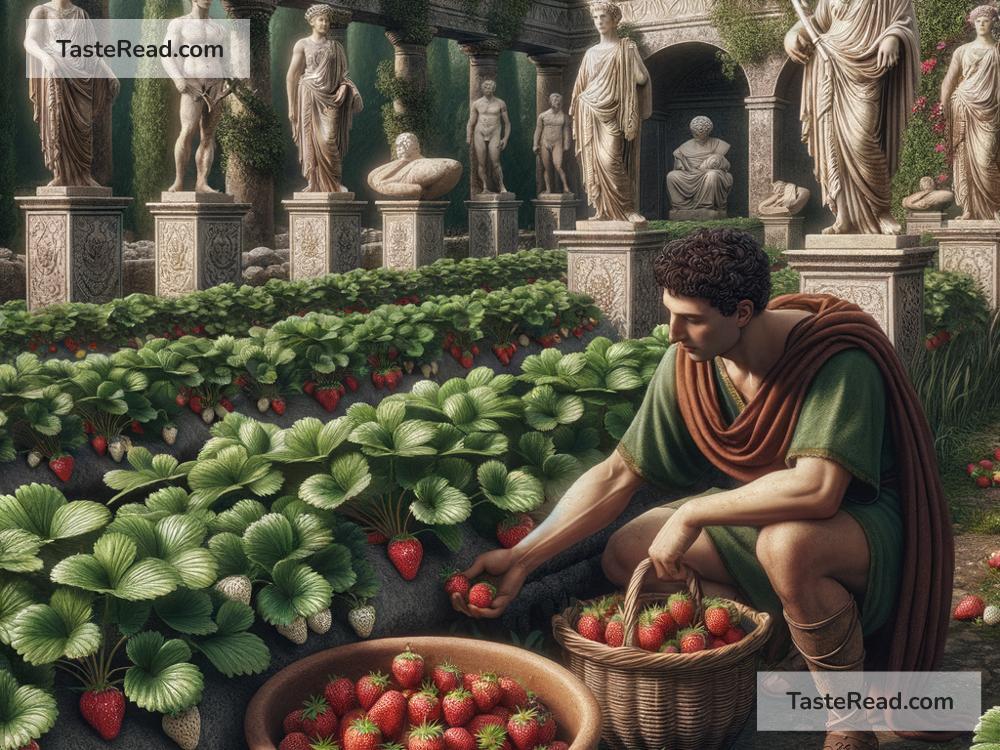The Surprising Story of Strawberries in Ancient Rome
When you bite into a juicy strawberry, it’s hard not to be amazed by its sweetness and charm. Strawberries are loved around the world today, and they appear in desserts, drinks, and even salads. But did you know that these delightful fruits have an unexpected connection to ancient Rome? While they weren’t celebrated as they are now, strawberries still played an interesting role in Roman life. Let’s take a look at their surprising story!
Wild Beginnings and a Modest Role
Strawberries have been around for thousands of years. Before they were grown on large farms, they existed in the wild. Ancient Rome was home to a small, wild species of strawberry called Fragaria vesca. These strawberries were tiny, much smaller than the plump ones we see in grocery stores today, and they grew naturally in forests and hillsides.
Interestingly, Romans didn’t cultivate strawberries in gardens or farms the way we grow them today. Instead, they would forage for them in the wild. Strawberries in ancient Rome were not seen as an important food source—they were more of a seasonal treat, enjoyed whenever they could be found.
Strawberries in Roman Medicine
Though strawberries weren’t a staple of Roman cuisine, they were valued for their medicinal properties. Roman scholars and physicians believed these little fruits could cure certain ailments. Pliny the Elder, a famous Roman writer and naturalist, referenced strawberries in his writings. He thought that strawberries had health benefits and could be used to treat symptoms such as fever, inflammation, kidney stones, and digestive issues.
The medicinal use of strawberries wasn’t just limited to their fruit. Romans sometimes utilized the leaves and roots of the strawberry plant as remedies, too. For example, tea made from strawberry leaves was believed to have healing properties. While modern science might not fully support all of these ancient claims, it’s fascinating to see how this tiny fruit captured the attention of ancient healers.
Strawberries as a Symbol of Beauty and Nature
In addition to their medicinal uses, strawberries served as symbols of beauty and nature in Roman culture. Their heart-like shape and bright red color made them a visual delight, and Romans associated strawberries with the goddess Venus, who represented love, beauty, and fertility. Strawberries were considered a natural delicacy, embodying sweetness and freshness.
Romans often admired nature and its gifts, and strawberries were part of this appreciation. They were enjoyed not just for their taste, but for their appearance and the joy of finding them in the wild.
Not Yet a Culinary Star
Despite their symbolism and occasional medicinal use, strawberries weren’t a major feature in the Roman diet. Romans were more interested in other fruits, such as grapes, figs, apples, and cherries. Because strawberries were small and not easy to cultivate in large quantities, they didn’t make a big impact on Roman cuisine.
Roman cooking was quite advanced for its time, with recipes that included complex sauces, roasts, and even desserts. However, strawberries didn’t quite make it into the culinary spotlight. Their fleeting seasonal availability and wild nature kept them on the sidelines of Roman meals. It wasn’t until much later in history, during the Middle Ages and beyond, that strawberries began to rise in culinary importance.
The Evolution of Strawberries After Rome
After the fall of the Roman Empire, strawberries started gaining more recognition in Europe. The species we know today—the big, sweet strawberries—didn’t exist in ancient Rome. Modern strawberries evolved through centuries of selective breeding. It wasn’t until the 18th century that the large garden strawberry (Fragaria × ananassa) first appeared in France, combining species from North and South America.
By then, strawberries had become a symbol of luxury and romance. They were featured prominently in feasts and banquets. But their quieter beginnings in the forests of Roman lands remind us how far strawberries have come.
Lessons from Ancient Rome
The story of strawberries in ancient Rome teaches us something profound about nature and history. Many things we take for granted, like the fruits we see piled high in supermarkets, have humble and surprising origins. Strawberries weren’t always the superstars they are today. In ancient times, they were simple, wild treats—a reminder of how history, innovation, and human curiosity can transform even the smallest details of life.
Next time you enjoy a strawberry, think about its journey. From the wild hillsides of Rome to your kitchen table, strawberries have traveled a long way through time. Although the Romans didn’t grow fields of strawberries or include them in elaborate dishes, they still cherished their beauty, medicinal properties, and connection to nature.
Who knew that a tiny fruit could have such an interesting past? The story of strawberries is a delicious bite of history worth savoring.


